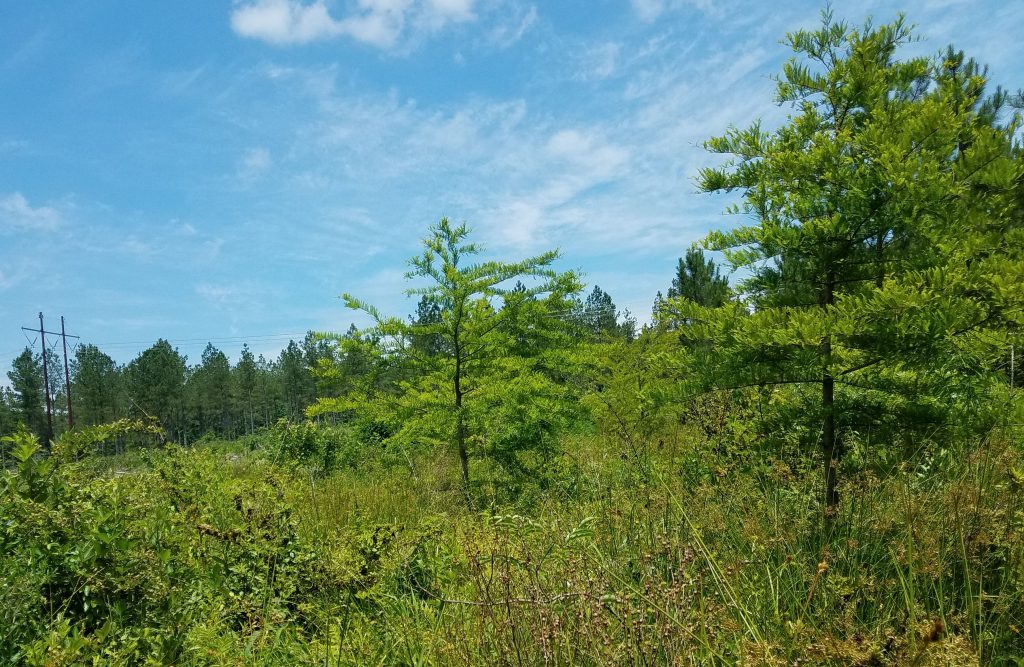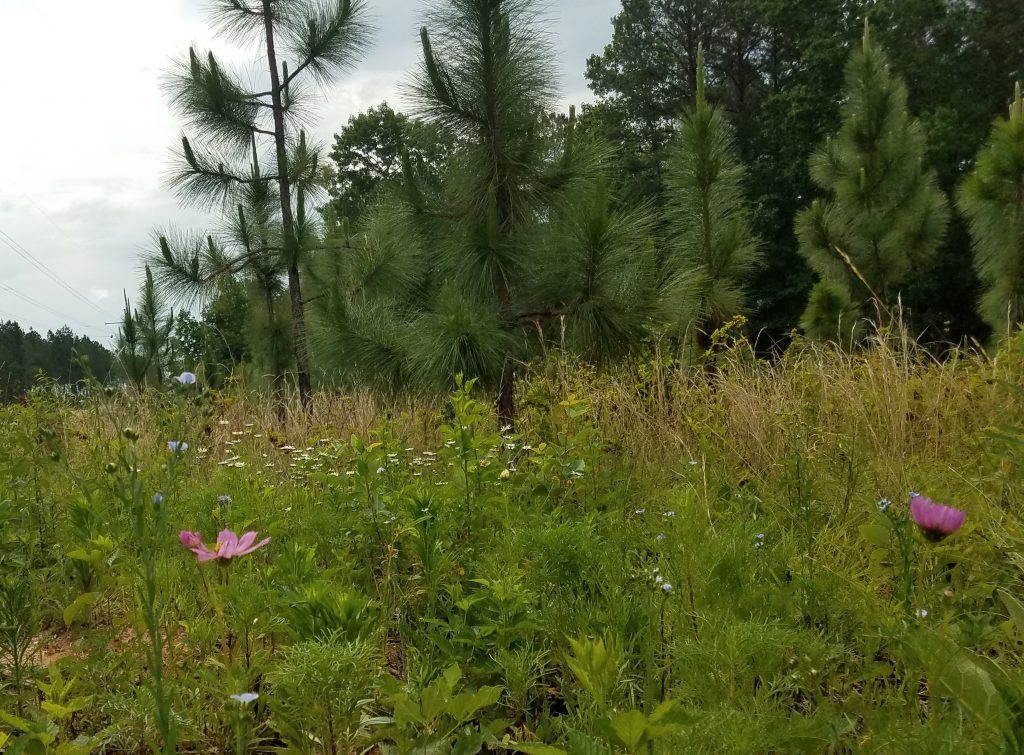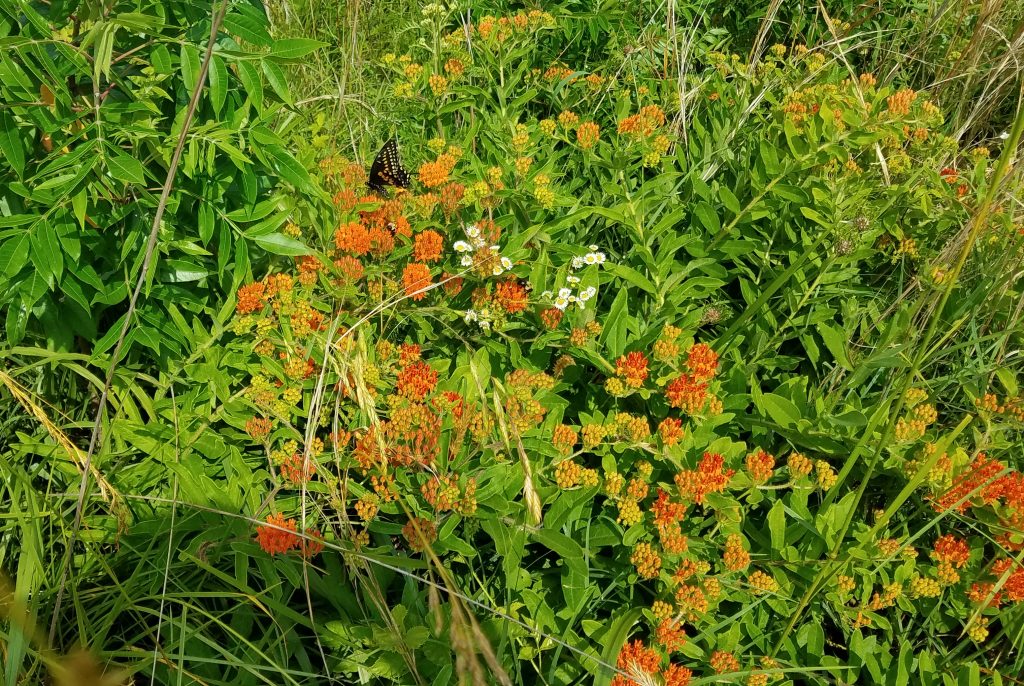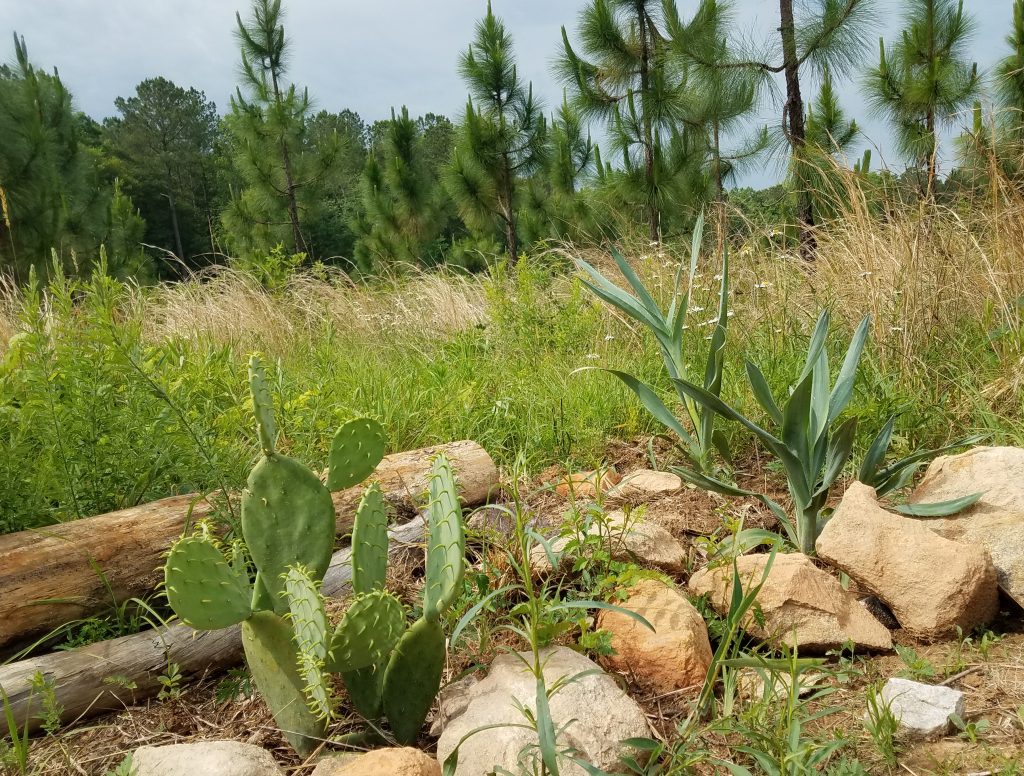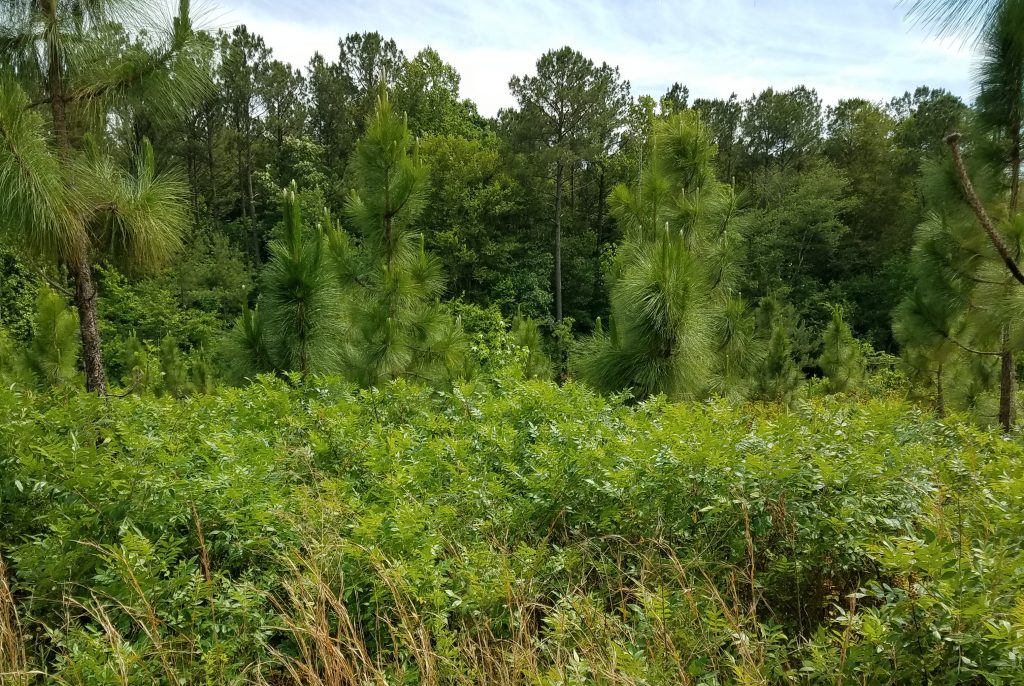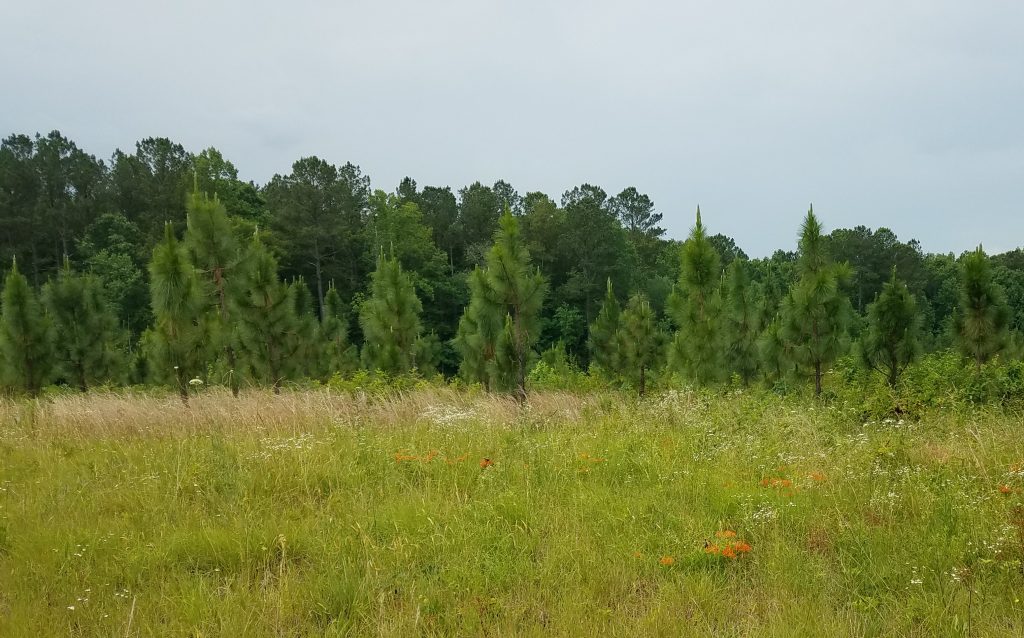
You can never win the battle against brush & brambles, but you can hold them at bay and try to establish competing system that you think are more appropriate
Open pinelands
In my pinelands, I have two options of appropriate, and lots of other choices. The two appropriate ones are closed canopy, where they trees are so close together than nothing much grows on the ground and open woodland with grass forbs and some bushes. My preference is for the latter because I think it more ecologically balanced. Getting there is a fight.
Landscape painted by fire
In “nature” open pinelands are maintained by fire and this is ultimately how I want to manage mine. But fire is a dangerous tool. I am not competent to use it as much as I think I should. In the meantime, I depend on chemical and mechanical tools.
I spent all of yesterday and a very long day last week cutting with my brush tool and accomplished not very much. It is physically difficult work and there is more to be done than I can do. I think I will hire someone to spray the Japanese honeysuckle. They use helicopters and can get at all those parts I cannot.
My goal is to get at an open forest, as I mentioned. My longleaf experimental patch is doing well in that respect. An interesting development is sumac.
Sumac
Wrote elsewhere that sumac is nearly fireproof. It burns to the ground and comes back stronger. You can see in the first picture, we have a thicket developing. We have both shinny (winged) and staghorn sumac. The shinny are the ones making the thickets. The pines are up on top, so I don’t think they will be harmed. The sumac shades out brambles, which is good. Having patches of sumac could be good for wildlife I want to encourage, like bobwhite quail. And sumac are attractive in the fall (beautiful red) is good for bees and provides food for wildlife.What’s not to love.
Prickly pear and the rattlesnake masters
My prickly pear and rattlesnake master are thriving, as you see it the next picture. Both these are native to Virginia pinelands, but I have never seen any. Chrissy got them for me and I am trying them out.
Bald cypress
I also did some work cutting around the bald cypress in the marshy area long side the longleaf. My friend Eric Goodman planted them at the same time (2012) as the longleaf. The biggest are around 10 feet high, but some are only about four feet. They were sandwiched under some unthinned loblolly. When we harvested the loblolly last year, they started to get a lot more sun and are doing well, but so is the competition. I helped them out but cutting back the gum and poplar. There are maybe 30 of them. Some/most are okay. They can survive with their feet wet and most others cannot.
A prairie ecosystem with trees
Next picture shows the milkweed/butterfly bush. I am trying to encourage plants like this under the pines. Next is how that goal is coming along. Last are just pretty flowers. I think they are black eyed Susan.

